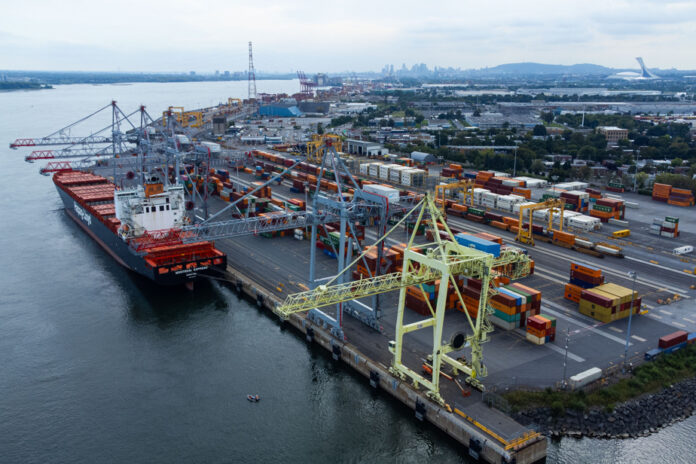Quebec ports are benefiting from a wave of all-out investments with dock renovations, electrified equipment for handling and even electric charging stations. For two years, the Quebec Maritime Strategy has provided a budget of $930 million to finance such investments.
But this amount is well below what will be necessary to maintain Quebec’s maritime industry at world standards. “Current investments do not correspond to medium and long term needs. We need to double these investments,” says Claude Comtois, professor in the geography department of the University of Montreal, affiliated with the Interuniversity Center for Research on Business Networks, Logistics and Transport (CIRRELT).
Half of maritime flows in Quebec relate to intercontinental trade, underlines Claude Comtois. And another 15% are connections to ports located in America. “The St. Lawrence port and maritime system is resolutely internationally oriented,” summarizes this specialist in maritime transport and logistics chains.
However, international activity requires that infrastructures be at the level of those that can be found elsewhere in the world, continues Claude Comtois. Over the past decade, the ports of the St. Lawrence have made investments of $750 million to maintain their competitive positioning with the ports of the United States, he specifies.
The promise of $930 million from Quebec’s Maritime Strategy is a step forward. “But the needs of the St. Lawrence ports are in the range of 2 to 3 billion dollars,” warns Claude Comtois. This is because investments should not be limited to ports: the maintenance of the maritime network, the installation of engineering structures to prevent erosion, the digitization of the Saint-Laurent system with a set of systems providing weather conditions, data on ship movements…
All this requires transforming the Saint-Laurent system into a digital route, as is done along the Rhine in Europe and the Yan in China. “This goes much further than just thinking about using artificial intelligence,” illustrates the researcher.
A multitude of parameters must be digitized, for example to monitor water levels and thus indicate to a ship coming from Europe how many tonnes it can load before going to a Quebec port. This involves installing sensors everywhere and creating digital twins of our ports. “Everything must be interconnected to have a complete view of the system,” points out Mr. Comtois.
Decarbonization is one of the main projects of Quebec ports. Committed to a process that should bring them to carbon neutrality in 2050, port authorities are intensifying their efforts. “This does not only concern large companies, but also smaller ones, because they all have targets by 2030 and 2050,” underlines Mathieu St-Pierre, CEO of the Société de développement économique du Saint-Laurent.
Each player in maritime transport has its importance in achieving these objectives. Shipowners need ports to move towards carbon neutrality, illustrates Mr. St-Pierre. To provide green electricity to ships, ports must equip themselves with electrical terminals. The investment is not negligible, since it takes between 10 and 20 million dollars per terminal at the dock.
The Port of Montreal has started this electrification work, particularly for cruise ships. But overall, Quebec ports are poorly or not equipped. “We are a little behind compared to what is done elsewhere, particularly in Europe,” says Mathieu St-Pierre. In this area too, investments will have to increase.















